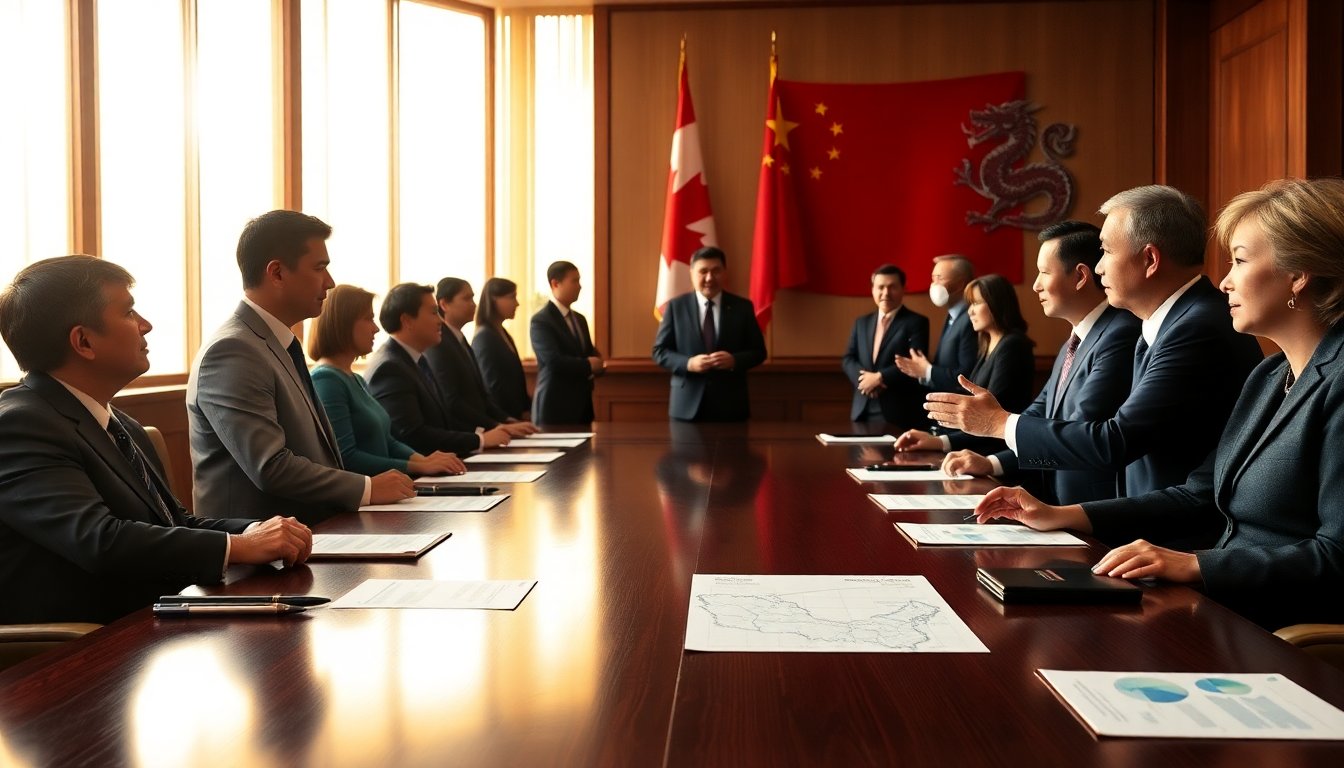Table of Contents
In a significant diplomatic encounter, Canadian Prime Minister Mark Carney met with Chinese President Xi Jinping on the sidelines of the Asia-Pacific Economic Cooperation (APEC) summit. This meeting marked the first face-to-face discussion between leaders of the two countries since 2017.
During this period, their relationship has encountered numerous challenges.
The dialogue, initiated by Carney, is positioned as an opportunity for pragmatic and constructive engagement. It aims to address the complexities that have emerged over the years. In his opening remarks, Carney recognized the growing estrangement between Canada and China, stating that “distance is not the way to solve problems.” This reflects a commitment to mend the rift and collaborate for the mutual benefit of both nations.
Restoring diplomatic ties and trade relations
President Xi welcomed the visit from Carney, highlighting the longstanding cooperative history between their nations. He expressed a readiness to collaborate in restoring Canada-China relations to a state that is “healthy, stable, and sustainable.” This statement reflects a mutual acknowledgment of the necessity to move past previous tensions that have obstructed bilateral collaboration.
Addressing trade barriers
After their discussions, officials revealed that both leaders instructed their teams to expedite the resolution of outstanding trade issues, particularly related to agriculture and agri-food products, which have been central to ongoing trade disputes. The Canadian export market, especially for products such as canola, seafood, and electric vehicles, has encountered considerable difficulties due to existing tariffs and trade barriers imposed by China.
Mark Carney’s acknowledgment of the strained relationship reflects a broader context of international trade tensions, particularly with the United States. The necessity for Canada to diversify its trade relationships has become increasingly evident as it navigates the complexities of its interactions with both the U.S.
and China.
Implications for Canadian businesses
In his brief remarks to the media, Carney expressed optimism regarding the discussions, suggesting that the meeting could mark a turning point that opens new opportunities for Canadian families and businesses. While he did not provide specific details, the Prime Minister alluded to a more favorable trading environment in the future.
Challenges in Canadian-China relations
The renewed dialogue between Canada and China occurs against a backdrop of escalating tensions. The 2018 arrest of Huawei executive Meng Wanzhou in Canada and the subsequent detention of two Canadians by China have significantly influenced public and political perceptions of China in Canada. Additionally, allegations of foreign interference in Canadian elections further complicate this fragile relationship.
Experts, including Jeff Nankivell from the Asia Pacific Foundation of Canada, indicate that this moment presents an opportunity for a recalibration of ties. Changing dynamics with the United States and the need to strengthen economic partnerships with major Asian economies underscore this necessity.
Looking forward: A new era?
Carney’s meeting with Xi follows significant discussions between Xi and U.S. President Donald Trump, during which both leaders addressed strategies to alleviate trade tensions. This context highlights Canada’s potential to capitalize on its position within the evolving landscape of international trade.
As Carney prepares for a prospective state visit to China, the focus will likely remain on cultivating a collaborative approach to resolve ongoing trade disputes and enhance economic benefits for both nations. This commitment to a more constructive partnership signals a positive development for Canada-China relations, indicating that both countries are willing to engage in more fruitful dialogue.





